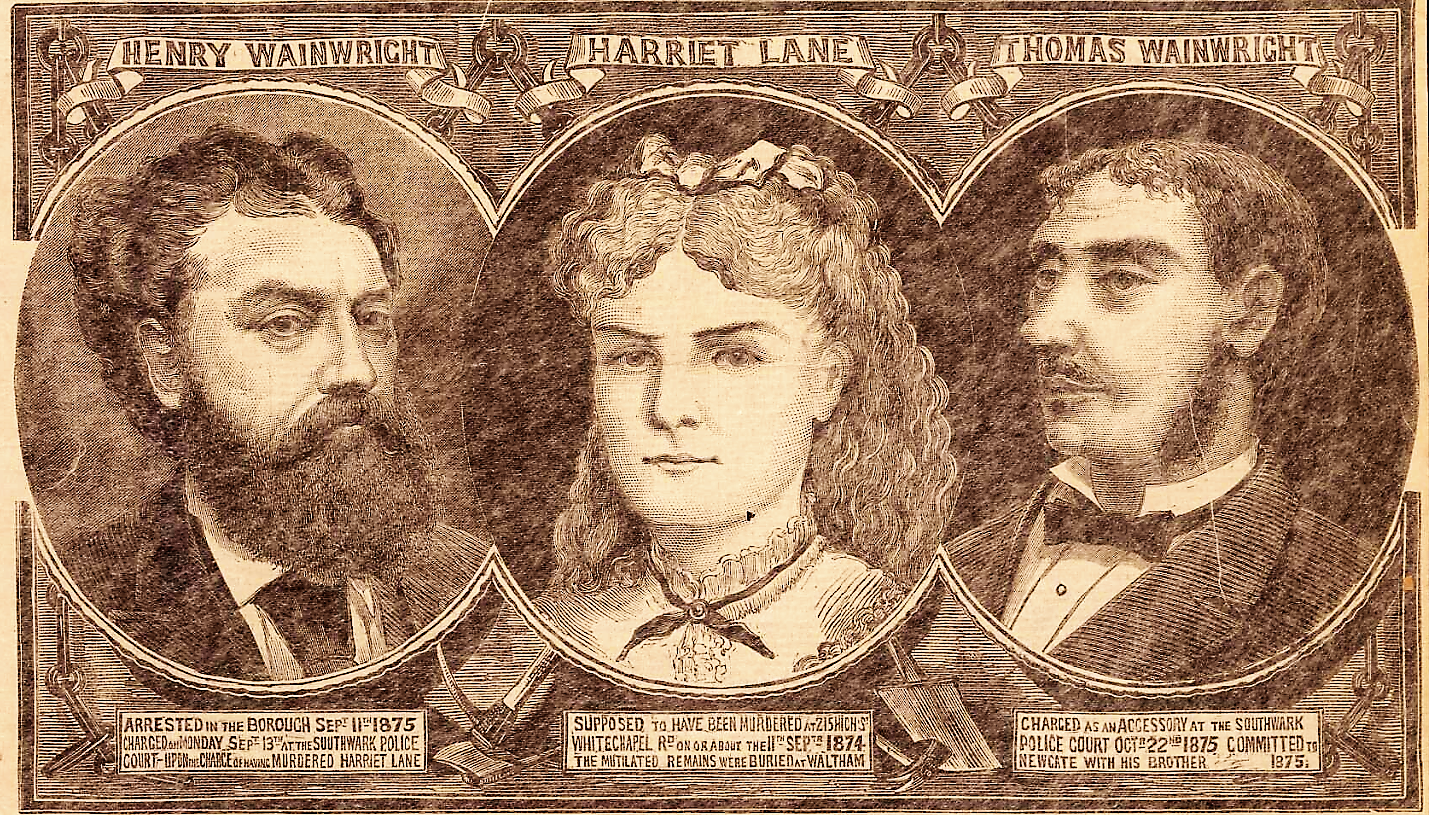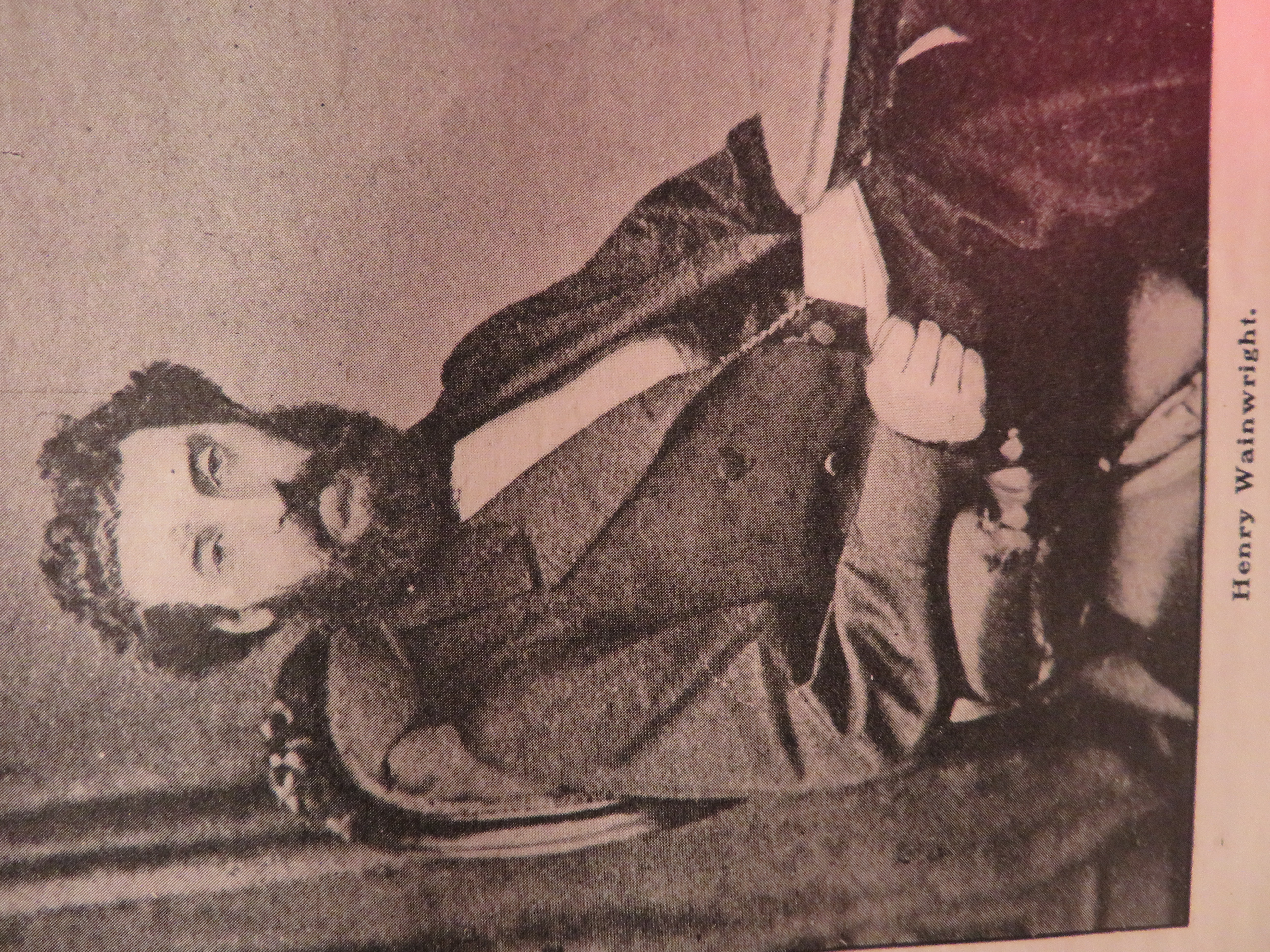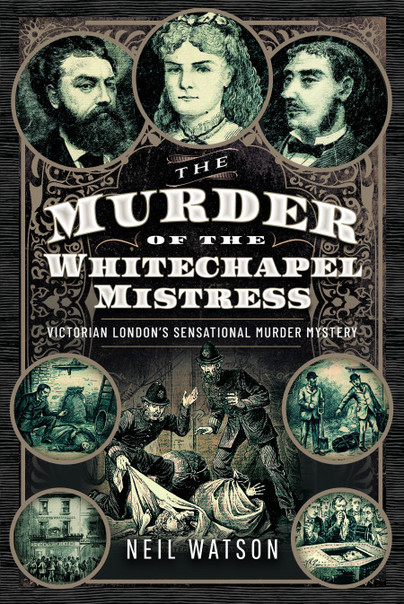Author Guest Post: Neil Watson
The Murder of the Whitechapel Mistress
What do you look for when you are searching for your next history book? I love a good old fashioned Victorian Murder. Policemen wearing helmets with their chin straps down over long beards is what I like. Having been brought up on the cases of Sherlock Holmes and then seeing the brilliant Jeremy Brett, Holmes series on the TV, I find that late 19th century crime is my go-to era. Cases weren’t solved in those days by DNA or fingerprinting.
I currently write short historical articles for the Whitechapel Society, but about 4 years ago I was asked to investigate the Wainwright murder case of 1875. I’d never heard of it, which was surprising given its notoriety at the time. Perhaps it had become overlooked due to the Jack the Ripper murders in 1888.

This case involved a tale of a high profile married business man, falling for an attractive young woman. I had been able to find the bare bones of the case online, which had whetted my appetite. I duly wrote a 4-page article for the Whitechapel Society Journal. I thought I had put the case to bed, but no. Soon afterwards I was shown a large prison report relating to the case. On reading this fascinating file, I instantly knew that there was a book in it. The case involved the two Wainwright Brothers, Henry and Thomas being on trial for the murder of Harriet Lane. Her body had lain undisturbed under the floor boards of Henry’s warehouse for a whole year. A schoolboy error by Henry resulted in him being nabbed by the police as his cab containing 2 bags of body parts of the unfortunate Harriet had been chased through Whitechapel and across London Bridge.
Henry’s world fell apart at the moment of his arrest, but his brother Thomas later had his collar felt as an accessory to murder. A big trial at the Old Bailey was to follow. I began my research with newspaper reports that could be found in their hundreds on the British Newspaper Archive (B.N.A.) website. That site is a goldmine for history researchers, as sometimes it’s the only place to find out information about long lost cases. I had checked the website for the 1875 Illustrated Police News reports, but annoyingly, that year was missing, but my luck was about to change.

My next port of call was the amazing National Archives (N.A.) at Kew. After alighting the tube at Kew Gardens Station, I got that familiar pang of excitement that I always get when I approach the building. I knew they had 3 files on the case, but would there be much detail? As I approached my perspex box in the search room I could see 3 heavy looking case files. My excitement was hard to suppress. They contained a treasure trove of historical goodies. My camera worked overtime as I snapped every single piece of paper. Once that was over, I settled down to enjoy the contents.
I wondered if or when these files had ever been examined before? Apart from the hand written statements, I found many fascinating items. The police drawings of the murder scene and the hiding place where the body was to have been deposited, was on a large tracing paper sheet. Newspaper cuttings, letters from the public, birth certificates and business cards appeared. Most poignant however were the items pertaining to the poor victim, Harriet Lane. The file contained the pawn ticket that she had used on the day she died. It also contained both the last letter and envelope that she had sent to her parents. I was handling history. It was a sad but magical moment.
The main other major find in the case files was a 50-page statement that had been written by Henry after he had been convicted of murder. In it, he blamed his brother for the murder. This file was withheld from his family and may have lain undisturbed for 145 years. It was explosive stuff. Thomas had also written a 3-page statement saying he had never even met Harriet. My book, The Murder of The Whitechapel Mistress examines the evidence and who I think committed the murder.

If all this wasn’t enough, I then got lucky for a second time. I received my usual weekly email from the BNA, telling me that they had just added the 1875 editions of the Illustrated Police News (I.P.N.). The next few minutes saw my excitement levels rise to that of my visit to Kew several weeks earlier. As I examined the autumn editions of the IPN, many weeks of this weekly paper contained front pages and supplement pages covered in drawings of the case. Over 100 separate images appeared before me as the case burst into life. I now had pictures of all the main characters, places involved in the case and all manner of exciting pictures. One showed the inquest jury looking at the body of Harriet in her coffin with a hole cut out in the lid to allow witnesses to view her face. Armed with the N.A files and the pictures, the book idea had legs. I was so thrilled.
Writing the book was a delight due to all the material I was able to discover. I actually had too much material and ended up cutting out 70,000 words from the finished 100,000-word book.

The book will be a joy to anyone who is interested in murder of any period, it has twists and turns and a clever conspiracy between Henry and Thomas that almost saw them getting away with murder. I also had great fun when I visited several of the venues in the story that still exist, such as Henry’s beautiful house at Mile End, and the building that Harriet’s body was to be hidden in. The best part was perhaps hailing a black cab in the same spot that Henry had picked up his horse drawn cab with the body and travelling to Borough High Street to the exact spot where he alighted when he was arrested after being chased across the City of London.
This book covers all the fascinating details of the investigation and trial and will keep you hooked right till the end. If you have half as much fun as I did researching this book, you are in for a treat!

The Murder of the Whitechapel Mistress is available to order here.

